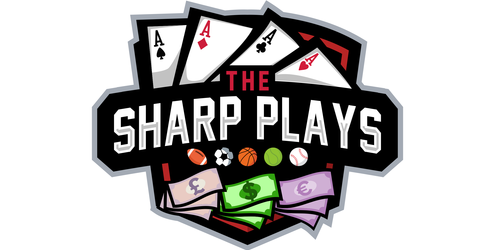
Originally published in the Telegram channel on December 9th, 2022…
One of the most common questions I get is:
“How the hell do sportsbooks get the number so damn close to the actual result?”
You see a game like Denver -1, and it ends in a one-point win by Denver — exactly the closing line. Feels like wizardry, right?
It’s not. It’s just algorithms, sharp money, and old-school standard deviation working hand-in-hand.
Let’s pull back the curtain.
🧠 Algorithms Set the Line, Sharps Shape It
Sportsbooks set opening lines using complex algorithms that factor in team strength, injuries, historical data, situational variables, and more.
Then comes the sharp money — the professional bettors and syndicates who bet early and often. Their algorithms and volume shape the market quickly.
As money comes in on one side or the other, the book adjusts the line — not because they know the outcome, but to manage risk and balance action.
So when you see a line that looks “perfect” in hindsight, it’s not that the sportsbook “knew.”
It’s just math doing its thing.
🧮 Let’s Talk Standard Deviation (Yep, That Thing from Stats Class)
Standard deviation measures how much a result is likely to vary from the expected value (the mean). Here’s how it plays out:
Example Game: Cleveland -5 vs. Sacramento
Let’s assume the expected outcome is Cleveland by 5 points. That’s the line.
Now let’s apply standard deviation:
📈 2 Standard Deviations = 95% of Outcomes
This gives us a range of 31 possible outcomes:
- Cleveland wins by: 1 to 21
- Sacramento wins by: 1 to 10
➡️ That means there’s a 1-in-31 chance (roughly 3.2%) that a random dart throw hits exactly a 5-point Cleveland win.
So when a game ends exactly on the number, it’s not skill or inside info. It’s randomness within a well-modeled range.
📉 1 Standard Deviation = 68% of Outcomes
Let’s narrow the range:
- Cleveland wins by: 1 to 12
- Sacramento wins by: 1 or 2
Now there are 14 possible outcomes.
The chance that Cleveland wins by exactly 5?
1-in-14, or about 7.1%.
But here’s the kicker…
🧮 What are the Odds the Final Score Lands Near the Spread?
Let’s define “near the spread” as:
- Cleveland wins by 4, 5, or 6
That’s 3 outcomes within our 14-option range.
So there’s roughly a 21% chance (3 out of 14) the result lands on or near the line (within 1 point of the spread). That’s a 5-to-1 shot.
🎲 Zooming Out: The Law of Large Numbers
Let’s look at a typical weekend:
- NFL: 16 games
- College Football: 90+ games
Across all those games, you’d statistically expect:
- 3–6 games in CFB to land on the number
- 1 NFL game every 2 weeks to hit it dead-on
Is it spooky when it happens? Sure.
But is it rare? Not really — it’s just the math playing out over time.
🔮 Do Sportsbooks Know the Outcome?
No.
They’re not Nostradamus. They’re not psychic.
They just understand:
- Algorithms
- Sharp market movement
- Random distribution of outcomes
And if you’re setting prices on hundreds of games per week,
the odds say you will “nail” a few just by chance.
🧠 Want to Go Deeper?
For more insights on betting math, sharp action, and probability-based thinking…
👉 Check out TSP Live – where the edge lives!
🏁 Final Word
Bookmakers aren’t fortune tellers. They’re just leveraging cold, hard numbers.
But when the stars align and the final score lands right on the spread?
Don’t be too impressed. It’s just math with a little luck sprinkled in.
🎯 Good luck out there! Keep your mind sharp and your bets sharper.
